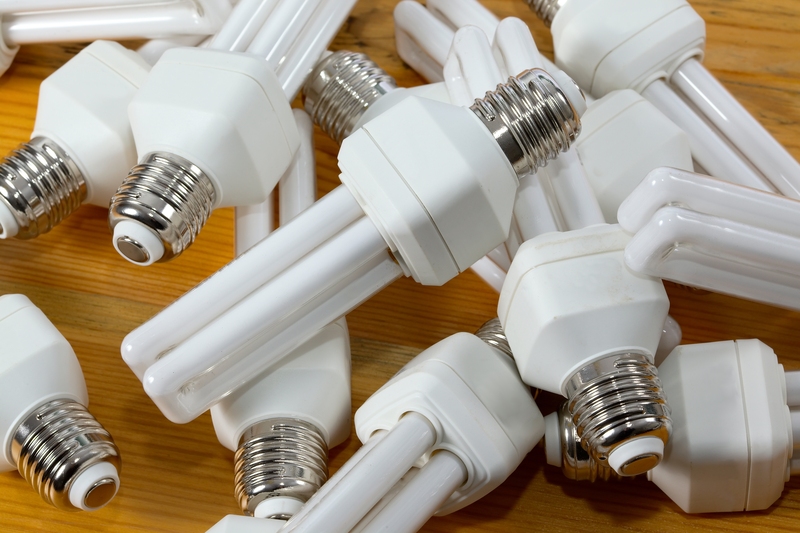The Quest to Eliminate Microplastic Pollution
Microplastic pollution is rapidly gaining attention as one of the world's most pressing environmental issues. From the depths of the oceans to the rivers in our hometowns, microplastics are everywhere. This extensive guide explores the sources of microplastic contamination, the dangers it poses, and the ambitious global efforts to eliminate microplastic pollution. If you are searching for ways to combat microplastics or want to understand the magnitude of this environmental issue, read on.

What Are Microplastics?
Microplastics are tiny plastic particles less than 5mm in diameter. These particles can originate from a variety of sources, including larger plastic debris that degrades into smaller fragments, or they can be directly manufactured at a microscopic size for use in products.
- Primary microplastics: These are intentionally manufactured small plastics, such as microbeads in cosmetics and exfoliating products.
- Secondary microplastics: Formed by the breakdown of larger plastic items like bottles, bags, or fishing nets due to sunlight, wind, and wave action.
Because of their minuscule size, microplastics have permeated almost every part of the environment - from the air we breathe and the water we drink, to the food we eat.
The Sources of Microplastic Contamination
Understanding the sources is crucial for tackling microplastic contamination. The proliferation of plastic products in our daily lives means these particles can be traced to a wide array of human activities. Here are some key contributors:
- Textiles: Synthetic fabrics like polyester shed microfibers during washing that end up in waterways.
- Personal Care Products: Cleansers with microbeads pass through water treatment plants into the environment.
- Tire Abrasion: Car tires release microplastic particles through friction with roads.
- Plastic Litter: Larger plastics break down into smaller pieces due to weathering and sunlight.
- Industrial Processes: Certain industries use microplastic pellets, called nurdles, that can spill and reach water bodies.
These sources mean microplastic pollution is not limited to one sector but is a widespread issue requiring comprehensive solutions.
Why Is Microplastic Pollution So Dangerous?
The pervasiveness of microplastic pollution is alarming. Not only has plastic been found in the world's deepest ocean trenches, but scientists have also discovered it in Arctic ice and tap water across multiple continents.
The risks of microplastic contamination include:
- Threats to Marine Life: Animals misidentify microplastics as food, causing physical harm, malnutrition, and even death.
- Bioaccumulation in the Food Chain: Microplastics can accumulate in marine organisms, traveling up the food chain to humans.
- Chemical Contamination: Microplastics can absorb and transport toxic substances such as pesticides and heavy metals.
- Unknown Health Effects: Research is ongoing, but some studies suggest digestive inflammation and other health concerns in both animals and potentially humans.
Due to their small size, microplastics are almost impossible to filter out entirely with current water treatment or purification technologies, making them particularly insidious.
Microplastics in Drinking Water and Food
Microplastic contamination is now known to reach the food and drink on our tables. Studies worldwide have identified microplastic particles in:
- Tap and bottled water
- Sea salt
- Honey
- Seafood
- Beer
With humans estimated to consume tens of thousands of particles annually, the potential health implications are a growing concern for the scientific community and regulatory agencies.
Global Efforts: The Fight to Eliminate Microplastic Pollution
The magnitude of microplastic pollution has prompted action from individuals, corporations, and governments worldwide. Let's look at some of the innovative approaches and global strategies being deployed to combat this urgent problem.
International Bans and Regulations
- Microbead Bans: Countries like the United States, Canada, and the United Kingdom have banned the manufacture and sale of rinse-off cosmetics containing microbeads.
- EU Legislation: The European Union is actively regulating single-use plastics and promoting research into microplastic mitigation.
- International Conventions: Agreements such as the Basel Convention have added plastics to regulated materials to limit transboundary pollution.
Innovative Technologies and Research
- Advanced Filtration: Scientists are developing ultra-fine filters for wastewater treatment plants to capture microfibers and microbeads.
- Biodegradable Plastics: Research is ongoing into new materials that break down harmlessly, reducing future microplastic waste.
- Microplastic Traps: Devices like floating barriers and 'seabins' capture floating plastics before they degrade.
- Enzyme Solutions: Some studies focus on bacterial and fungal enzymes that can degrade plastics at the molecular level.
Community and Grassroots Initiatives
- Beach Cleanups: Citizen-led events remove plastic debris from coastlines, preventing it from breaking down into microplastics.
- Public Awareness Campaigns: NGOs and environmental groups drive behavioral change through education.
- Upcycling and Plastic Reduction: Artists and innovators turn waste plastic into useful products or art, reducing litter.
How Individuals Can Help Eliminate Microplastic Pollution
While systemic change is essential, there are actions you can take today to reduce your microplastic footprint and contribute to the global quest to eliminate microplastic pollution.
- Choose natural fibers: Buy clothing made from cotton, wool, or hemp instead of synthetic fabrics.
- Use a microplastic filter: Install a washing machine filter to capture microfibers from laundry.
- Avoid products with microbeads: Check ingredient lists for "polyethylene" or "polypropylene."
- Reduce single-use plastic: Swap disposable items for reusable alternatives.
- Support legislative change: Advocate for more robust plastic regulations in your community or country.
By making conscious purchasing decisions and supporting responsible brands, you can help drive the shift towards a cleaner, microplastic-free world.
The Role of Innovation in Solving Microplastic Contamination
Innovation is at the heart of the movement to eliminate microplastics. Scientists and entrepreneurs are actively building technologies and processes to identify, capture, and even destroy microplastic particles before they enter the environment.
- Wastewater Upgrades: Modernizing treatment plants to filter out smaller particles more effectively.
- Polymer Science: Creating eco-friendly plastics that degrade safely in nature.
- Educational Tools: Apps and interactive maps track local microplastic pollution and offer solutions.
- Open Water Robotics: Drones and autonomous vehicles collect and remove plastics from the ocean surface.
The Future of Microplastic Pollution Control
While total elimination is a long road, each step brings the world closer to a microplastic-free future. Researchers estimate that by 2050, the world's oceans could contain more plastics than fish by weight if current trends continue. The convergence of regulation, innovation, and public action represents humanity's best hope for overcoming the crisis.
Key Trends to Watch:
- Expanded Bans: More regions are expected to outlaw microplastics in consumer products.
- Corporate Accountability: Companies are being pressured to take responsibility for the full lifecycle of their plastic products.
- Traceability Tools: Blockchains and digital tracking help ensure plastics never become pollution.

Your Place in the Quest to Eliminate Microplastic Contamination
The quest to eliminate microplastic pollution is not a distant or abstract challenge--it is an everyday mission that involves industry, government, and every individual on the planet. Whether by reducing your own use, advocating for smarter policy, or supporting innovation, your choices matter in the fight against microplastic contamination.
In conclusion, the battle against microplastic pollution is ongoing. However, by working together and staying informed, we can reverse the tide of plastic contamination and safeguard our planet's future.
Frequently Asked Questions About Microplastics
- Can microplastics be removed from the environment?
While very difficult, advances in filtering and cleanup technologies are making removal increasingly possible, especially from water sources. - Are biodegradable plastics the answer to eliminating microplastics?
Biodegradable alternatives help, but require specific conditions to break down fully. Transitioning away from all unnecessary plastics remains crucial. - How can I immediately help reduce microplastic pollution?
Reduce plastic usage, choose products free of microbeads, and support initiatives targeting plastic waste.
Together, We Can Eliminate Microplastic Pollution
The journey to eliminate microplastic pollution will require consistent, collaborative effort, and the dedication of individuals, industries, and policymakers worldwide. By embracing new technologies, enforcing smarter regulations, and fostering a culture of sustainability, we can start to undo decades of damage and achieve a plastic-free legacy for future generations.
Stay informed, make environmentally friendly choices, and join the global quest to say goodbye to microplastic contamination.